We have given detailed NCERT Solutions for Class 8 Sanskrit रचना अपठित-अवबोधनम् Questions and Answers come in handy for quickly completing your homework.
CBSE Class 8 Sanskrit रचना अपठित-अवबोधनम्
1. अधोदत्तम् प्रत्येकंअनुच्छेदं पठत प्रश्नान् च उत्तरत-(नीचे दिए गए प्रत्येक अनुच्छेद को पढ़िए और प्रश्नों के उत्तर दीजिए-)
ग्रीष्मकालः सुखदस्य वसन्तकालस्य पश्चात् आगच्छति। ग्रीष्मकाले सूर्यस्य आतपः प्रखरः वर्तते । मानवाः पशु-पक्षिणः वृक्षाः, पादपाः चापि प्रखर-तापेन व्याकुलाः भवन्ति। केचित् जनाः विहाराय पर्वतस्थलेषु गच्छन्ति, केचित् गृहे वातानुकूलितेषु कक्षेषु तिष्ठन्ति । नद्यः, सरोवराः, तडागाः च शुष्यन्ति। सर्वत्र जलस्य अभावः दृश्यते। परं यदि ग्रीष्म-कालस्य प्रचण्डः तापः न स्यात् तर्हि मेघाः कथं भविष्यन्ति। मेघान् विना कुतः वृष्टिः? ग्रीष्मकालस्य प्रभावात् एव वर्षा-ऋतुः आगच्छति। ग्रीष्मकाले गुलमोहर-वृक्षेषु रक्तानि पुष्पाणि अतीव शोभन्ते। मल्लिका-मालती-पादपेषु सुगन्धमयानि श्वेतानि पुष्पाणि विकसन्ति।
I. एकपदेन उत्तरत-(एक पद में उत्तर दीजिए-)
1. ग्रीष्मकालः कस्य कालस्य पश्चात् आगच्छति ?
2. जनाः किमर्थं पर्वतस्थलेषु गच्छन्ति ?
3. ग्रीष्मकाले कस्य अभावः दृश्यते ?
4. ग्रीष्मकाले केषु वृक्षेषु रक्तानि पुष्पाणि आगच्छन्ति ?
उत्तरम्:
1. वसन्तकालस्य
2. विहाराय
3. जलस्य
4. गुलमोहरवृक्षेषु
II. पूर्णवाक्येन उत्तरत-(एक वाक्य में उत्तर दीजिए-)
श्वेतानि पुष्पाणि कुत्र विकसन्ति ?
उत्तरम्-
मल्लिका-मालती-पादपेषु सुगन्धमयानि श्वेतानि पुष्पाणि विकसन्ति।
III. यथानिर्देशम् उत्तराणि लिखत-(निर्देशानुसार उत्तर दीजिए)
1. स्यात् = …………………. धातुः, …………………. लकारः, …………………. पुरुषः, …………………. वचनम्
2. विहाराय = …………………. विभक्तिः , …………………. वचनम्।
उत्तरम्:
1. अस्, विधिलिङ, प्रथमः, एक
2. चतुर्थी, एकवचनम्।
IV. 1. समानार्थकम् पदम् चित्वा लिखत- प्रचण्डः = ………………….
2. विलोमपदम् लिखत-शैत्यम् = ………………….
उत्तरम्:
1. प्रखर:
2. तापः
2. भारतवर्षः कृषिप्रधान-देशः। अत्र अनेके जनाः ग्रामेषु निवसन्ति। कृषकाः कृषि-कार्यं कुर्वन्ति अन्नानि च उत्पादयन्ति। अन्नं विना कुतः जीवनम्? कृषिकार्यं विना च कथम् अन्नानाम् उत्पादनम् भवेत्? अतः ग्रामाणां कृषकाणां च महत्त्वम्। केचित् ग्रामीणाः स्वे-स्वे गृहे स्थित्वा कार्याणि कुर्वन्ति। यथा लौहकाराः लौहकार्यम् कुर्वन्ति, कुम्भकाराः घयन् रचयन्ति, तक्षकाः काष्ठेन मञ्चकान्, फलकान् आसन्दिकाः च रचयन्ति। अनेकेषु ग्रामेषु विद्युत्-सुविधा न अस्ति। जलानाम् अभावे कृषिः अपि इष्टम् फलं न ददाति। वस्तुतः ग्राम्य-जीवनम् अति कठिनम्। परम् ग्रामीणाः अल्पेन एवं सन्तुष्टाः भवन्ति।
I. एकपदेन उत्तरत–(एक पद में उत्तर दीजिए-)
1. भारतवर्षः कीदृशः देश: ? ।
2. के अन्नानि उत्पादयन्ति ?
3. कः घटान् रचयति ?
4. जलाभावे का इष्ट-फलं न ददाति ?
उत्तरम्:
1. कृषिप्रधान:
2. कृषकाः
3. कुम्भकार:
4. कृषिः |
II. पूर्णवाक्येन उत्तरत–(पूर्ण वाक्य में उत्तर दीजिए-)
तक्षकाः किं कुर्वन्ति ?
उत्तरम्:
तक्षकाः काष्ठेन मञ्चकान्, फलकान् आसन्दिकाः च रचयन्ति।
III. निर्देशानुसारं रिक्तस्थानानि पूरयत-(निर्देशानुसार रिक्त स्थान भरिए-)
1. भवेत् = …………………. धातुः, …………………. लकार:, …………………. पुरुषः, …………………. वचनम्।
2. कार्याणि = …………………. विभक्तिः , …………………. वचनम्
उत्तरम्:
1. भू, विधिलिङ, प्रथमः, एक।
2. द्वितीया, बहु।
IV. 1. अन्नं विना-अत्र विना योगे का विभक्तिः प्रयुक्ता? ………………….
2. समानार्थकं पदं चित्वा लिखत-यच्छति = ………………….
3. ‘जलानाम् अभावे कृषिः अपि इष्टं फलं न ददाति’ इति वाक्ये
(क) कर्तृपदम् किम्? |
(i) जलानाम्।
(ii) कृषिः
(iii) इष्टम्।
(ख) कर्मपदम् किम्? |
(i) अपि
(ii) इष्टम्।
(iii) फलम्।
उत्तरम्:
1. द्वितीया
2. ददाति।
3. (क) (ii) कृषि
(ख) (iii) फलम्
3. रामायणम् महाभारतम् च द्वे महाकाव्ये संस्कृत-साहित्यस्य। एतौ ग्रन्थौ भारतीय-संस्कृतेः आधारस्तम्भौ। आदिकाव्यं रामायणम् ऋषेः वाल्मीकेः रचना अस्ति। इदम् काव्यम् अष्टेषु अध्यायेषु वर्तते। ऋषिः वाल्मीकिः आदिकविः कथ्यते । महाभारतस्य रचयिता ऋषिः वेदव्यासः । महाभारतं नाम महाकाव्यम्। विश्व-कोषः इति कथ्यते। ‘यत् इह अस्ति न तत् अन्यत्र’ इति मन्यते । अयं ग्रन्थः शतसहस्र-श्लोकेषु निबद्धः। विश्व-प्रसिद्ध श्रीमद्भगवद्गीता अस्य महाकाव्यस्य अंशः अस्ति। गीतायाम् श्रीकृष्णः अर्जुनाय उपदिशति-‘कर्तव्य-भावेन स्वकर्त्तव्यं कुरु, कर्म-फलस्य आशाम् मा कुरु’। एषः उपदेशः जनानां हितकरः।।
I. एकपदेन उत्तरत।
1. रामायणं कस्य रचना ?
2. ऋषि: वेदव्यासः कस्य रचयिता ?
3. कः आदिकविः कथ्यते ?
4. किं नाम महाकाव्यं विश्वकोषः कथ्यते ?
उत्तरम्:
1. ऋषिवाल्मीके:
2. महाभारतस्य
3. वाल्मीकिः
4. महाभारतम्
II. एकवाक्येन उत्तरत।
श्रीकृष्णः अर्जुनाय किम् उपदिशति ?
उत्तरम्:
श्रीकृष्णः अर्जुनाय उपदिशति-कर्तव्यभावेन स्वकर्तव्यं कुरु, कर्मफलस्य आशा मा कुरु इति।
III. 1. एषः उपदेश:–अत्र किं विशेषणम्?
2. यथानिर्देशम् उत्तरत।
(क) कुरु = …………………. धातुः, …………………. लकारः, …………………. पुरुषः, …………………. वचनम्।
(ख) ऋषेः = …………………. विभक्तिः …………………. वचनम्।
3. बहुवचनम् लिखत-
(क) कुंरु (ए०व०) = …………………. बहुवचनम्।
(ख) स्वकर्त्तव्यम् (ए०व०) = …………………. बहुवचनम्
4. पर्यायम् लिखत
(क) रचित: ………………….
(ख) लेखक:- ………………….
उत्तरम्:
1. एषः
2. (क) कृ, लोट्, मध्यमः, एक.
(ख) षष्ठी, एक
3. (क) कुरुत
(ख) स्वकर्तव्याणि
4. (क) निबद्धः
(ख) रचयिता
IV. ‘गीतायाम् श्रीकृष्णः अर्जुनाय उपदिशति’ इति वाक्ये कर्तृपदम् किम्?
(गीतायाम्, श्रीकृष्णः, अर्जुनाय)
उत्तरम्:
श्रीकृष्णः
4. नदी-तीरे अस्ति एकः वट-वृक्षः। एकः अल्पज्ञः बालकः तस्य छायायाम् उपविष्टः। पश्यतिएकस्याम् लतायाम् विशालानि कालिन्द-फलानि सन्ति । सः चिन्तयति-अहो विचित्रम्! सुकोमलायाम् लतायाम् दीर्घानि फलानि, विशाले वट-वृक्षे च लघूनि पुष्पाणि सन्ति । नूनम् एव ईश्वरः मन्दमतिः मूर्खः च। एवम् चिन्तयन् सः वृक्षस्य अधः तिष्ठति स्म। तदैव एकम् सुकोमलम् पुष्पम् तस्य शिरसि पतति। सः विचारयति-यदि एतस्मिन् वृक्षे विशालम् फलम् स्यात् तर्हि अद्य मे शीर्षम् भग्नम् भवेत्। सौभाग्येन अहम् सकुशलः अस्मि। ईश्वरः यत् करोति शोभनं करोति। ननु मूर्खः अहम्, न तु ईश्वरः।
I. एकपदेन उत्तरत।।
1. वटवृक्षः कुत्र अस्ति?
2. विशालानि फलानि कस्याम् सन्ति ?
3. वटवृक्ष कीदृशानि पुष्पाणि?
4. बालकः कीदृशः अस्ति?
उत्तरम्:
1. नदीतीरे
2. लतायाम्
3. लघूनि
4. अल्पज्ञः
II. एकवाक्येन उत्तरत
अन्ततः बालकस्य ईश्वरविषये किं मतम् ?
उत्तरम्:
अन्ततः बालकस्य ईश्वरविषये इदं मतम् ‘ईश्वरः यत् करोति शोभनं करोति’। |
III. यथानिर्देशम् उत्तरत।
1. ‘दीर्घानि फलानि’–अत्र किं विशेषणम्?
2. (क) भवेत् = …………………. धातुः, …………………. लकारः, …………………. पुरुषः, …………………. वचनम्
(ख) लतायाम् = …………………. विभक्तिः …………………. वचनम्।
(ग) तदा + एव = ………………….
3. बहुवचने परिवर्त्य लिखत
(क) विशालम् फलम् = ………………….
(ख) एतस्मिन् वृक्षे = ………………….
(ग) अहम् मूर्खः = ………………….
उत्तरम्:
1. दीर्घानि
2. (क) भू, विधिलिङ, प्रथमः, एक
(ख) सप्तमी, एक
(ग) तदैव
3. (क) विशालानि फलानि
(ख) एतेषु वृक्षेषु
(ग) वयम् मूर्खाः
IV. ‘नदीतीरे अस्ति एकः वट-वृक्षः, इति वाक्ये ‘अस्ति’ क्रियापदस्य कर्ता कः?
(i) नदीतीरे
(ii) एकः
(iii) वटवृक्षः
उत्तरम्:
वटवृक्षः
5. व्याघ्रः अस्माकं राष्ट्र-पशुः। अतीव मनोहरः अयम्। अस्य शरीरे पीत-कृष्ण वर्णाः पंक्तयः नितरां शोभन्ते। कदाचित् अयं सघनेषु वनेषु निर्भयं विहरति स्म। हन्त! साम्प्रतम् व्याघ्राणां संख्या अत्यल्पा जाता। व्याघ्र-जातिं सर्वनाशात् रक्षितुं वन-पर्यावरण-मन्त्रालयः अनेकान् उपायान् करोति; परं सर्वे प्रयत्नाः निष्फलाः भवन्ति। कारणं किम्? केषाञ्चित् धूर्तानां लोभः अथ वा वनानां छेदनम्। अस्माकं वन-सम्पत्तिः रक्षितव्या, देशस्य राष्ट्रपशुः चापि रक्षणीयः। ‘परियोजना-व्याघ्रः’ (Project Tiger) सफलः भवेत्। अन्यथा भविष्यत्-काले वयं पुस्तकेषु अस्य चित्रमेव द्रक्ष्यामः।
I. एकपदेन उत्तरत।
1. अस्माकं राष्ट्रपशुः कः?
2. व्याघ्रं रक्षितुं कः उपायान् करोति ?
3. केषां संख्या अत्यल्पा जाता ?
4. अस्माकं का रक्षितव्या?
उत्तरम्:
1. व्याघ्रः
2. वन-पर्यावरण मन्त्रालयः
3. व्याघ्राणाम् 4. वन-सम्पदा
II. पूर्णवाक्येन उत्तरत
वन-पर्यावरण-मन्त्रालयः किमर्थम् उपायं करोति ?
उत्तरम्:
वन-पर्यावरण मन्त्रालयः व्याधं जाति सर्वनाशात् रक्षितुम् अनेकान् उपायान् करोति।
III. यथानिर्देशम् उत्तरत।
1. कदाचित् अयं सघनेषु वनेषु निर्भयं विहरति स्म।’ इति वाक्ये-
(क) कि विशेषणपदम्? ………………….
(ख) किम् अव्ययम्? ………………….
(ग) “अयं’ स्थाने संज्ञापदं प्रयोज्य वाक्यं पुनः लिखत। ………………….
उत्तरम्:
1. (क) सघनेषु
(ख) कदाचित्
(ग) कदाचित् व्याघ्रः सघनेषु वनेषु निर्भयं विहरति स्म।
2. विपर्ययम् लिखत।
(क) सफलाः
(ख) अत्यधिका
उत्तरम्:
(क) निफलाः
(ख) अत्यल्पा।
3. (क) ‘द्रक्ष्याम:’-अत्र कः धातुः?
(ख) ‘सर्वे’–अत्र का विभक्तिः ?
(ग) “रक्षितुम्’-अत्र कः प्रत्ययः?
उत्तरम्:
(क) दृश्
(ख) प्रथमा विभक्तिः
(ग) तुमुन् प्रत्ययः।
4. (क) चित्रमेव = …………………. + ………………….| (चित्रम + एव; चित्रम् + ऐव, चित्रम् + एव)
(ख) चापि = …………………. + …………………. (चा + पि, च + आपि, च + अपि)
उत्तरम्:
(क) चित्रम् + एव
(ख) च + अपि
6. हिमालयः भारतस्य उत्तरस्यां दिशायाम् स्थितः। एषः हि संसारस्य उन्नततमः पर्वतः। माउँट-एवरेस्ट इति हिमालस्य उन्नततमम् शिखरम्। इदम् शिखरम् नेपालदेशे स्थितम्। अनेकाः नद्यः हिमालयात् निर्गच्छन्ति देशस्य च विशालं भूभागं सिञ्चन्ति। अयं गिरिः अनेकासां वनस्पतीनाम् अपि आलयः। अत्र अनेकाः ओषधयः जायन्ते। हिमालयस्य कानिचित् शिखराणि सर्वं वर्ष हिमेन आच्छादितानि। पर्यटकाः अत्र हिमक्रीडानाम् आनन्दम् अनुभवितुम् आगच्छन्ति। अयं हि पर्वतानां राजा।
I. एकपदेन उत्तरत।
1. कः पर्वतानां राजा?
2. हिमालयः भारतस्य कस्यां दिशायां स्थित:?
3. हिमालयस्य उन्नततमम् शिखरम् किम्
4. अत्र अनेकाः काः जायन्ते?
उत्तरम्:
1. हिमालयः
2. उत्तरस्याम्
3. माउँट-एवरेस्ट
4. ओषधयः
II. पूर्णवाक्येन उत्तरत।
1. कानि सर्वं वर्ष हिमेन आच्छादितानि? ………………….
2. पर्यटकाः अत्र किमर्थम् आगच्छन्ति? ………………….
उत्तरम्:
1. हिमालयस्य कानिचित् शिखराणि सर्वं वर्ष हिमेन आच्छादितानि।
2. पर्यटकाः अत्र हिमक्रीडानाम् आनन्दम् अनुभवितुम् आगच्छन्ति।
III. भाषिककार्यम्-यथानिर्देशम् उत्तरत-
1. (क) अत्र अनेकाः ओषधयः जायन्ते’। इति वाक्ये ‘जायन्ते’ क्रियापदस्य कर्ता कः? (अत्र, ओषधयः, अनेकाः ) …………………………………..
(ख) अस्मिन् वाक्ये किम् अव्ययपदम् प्रयुक्तम्? …………………………………..
(ग) अत्र किम् विशेषणम्? …………………………………..
(घ) ………………………………….. (ए. व.) ………………………………….. (द्वि. व.) ओषधयः (ब. व.)
2. ‘अनेकाः नद्यः हिमालयात् निर्गछन्ति’ इति वाक्ये-
(क) हिमालयात् = ………………………………….. विभक्तिः ………………………………….. वचनम्
(ख) निर्गच्छन्ति = ………………………………….. उपसर्ग ………………………………….. धातुः
(ग) ………………………………….. (ए.व.) ………………………………….. (द्वि. व.) नद्यः (ब. व.)
3. (क) पर्यायम् लिखत- (i) पर्वत: = ………………………………….. (ii) गृहम् = …………………………………..
(ख) विपर्ययम् लिखत- (i) लघुम् = ………………………………….. (ii) दक्षिणस्याम् = …………………………………..
उत्तरम्:
1. (क) ओषधयः
(ख) अत्र
(ग) अनेकाः
(घ) ओषधिः, ओषधी
2. (क) पञ्चमी, एकवचनम्
(ख) निर्, गम् (ग) नदी, नद्यौ
3. (क)
(i) गिरिः
(ii) आलयः
(ख) (i) विशालम्
(ii) उत्तरस्याम्।
7. प्रातः काल अति सुखकरः भवति। खगाः मधुरं कूजन्ति। उद्यानेषु पुष्पाणि विकसन्ति। पवनः सुगन्धः शुद्धः च अस्ति। जनाः भ्रमणाय व्यायामाय वा गच्छन्ति। यदा पूर्वस्यां दिशायाम् सूर्यः उदयं गच्छति तदा क्षितिजस्य शोभा दर्शनीया भवति। एतत् मनोहरं दृश्यम् दृष्ट्वा चित्तम् प्रसन्नम् भवति। प्रातः सर्वे जनाः स्व-स्व-कार्यम् उल्लासेन कुर्वन्ति। परम् अलसाः सुप्ताः सन्ति। छात्राः प्रसन्नमुखेन विद्यालयम् पठनाय गच्छन्ति। सर्वे नवजीवनम् अनुभवन्ति।
I. एकपदेन उत्तरम्
1. प्रात:काल कीदृशः भवति? …………………………………..
2. के मधुरं कुजन्ति? …………………………………..
3. जनाः किमर्थम् गच्छन्ति? …………………………………..
4. सर्वे किम् अनुभवन्ति? …………………………………..
उत्तरम्:
1. सुखकरः,
2. खगाः,
3. भ्रमणाय/व्यायामाय,
4. नवजीवनम्
II. एकवाक्येन उत्तरम्
छात्राः प्रातः किम् कुर्वन्ति?
उत्तरम्:
छात्रा: प्रात: विद्यालयम् पठनाय गच्छन्ति।
III. 1. ‘पूर्वस्यां दिशायाम्’-अत्र किम् विशेषणपदम्?
2. यथानिर्देशम् उत्तरत-
(क) कुर्वन्ति = …………………. धातुः, …………………. लकार: …………………., पुरुष: …………………. वचनम्
(ख) दृष्ट्वा = …………………. धातुः, …………………. प्रत्ययः
(ग) पठनाय = …………………. विभक्तिः , …………………. वचनम्।
(घ) नवजीवनम् = …………………. विभक्तिः , …………………. वचनम्
3. विलोमपदं लिखते-
(क) पश्चिमायाम् = ………………….
(ख) अस्तं गच्छति = ………………….
4. समानार्थकं पदम् लिखत-
(क) सुन्दरम् = ………………….
(ख) रविः = ………………….
5. एकवचने परिवर्त्य वाक्यं पुनः लिखत-
(क) उद्यानेषु पुष्पाणि विकसन्ति। ………………….
(ख) खगाः मधुरं कूजन्ति। ………………….
उत्तरम्:
1. पूर्वस्याम्
2. (क) कृ धातुः, लट् लकारः, प्रथमः पुरुषः, बहुवचनम्
(ख) दृश् धातुः, क्त्वा प्रत्ययः
(ग) चतुर्थी विभक्तिः एकवचनम्
(घ) द्वितीया विभक्तिः एकवचनम्।
3. (क) पूर्वस्याम्
(ख) उदयं गच्छति
4. (क) मनोहरम्
(ख) सूर्यः
5. (क) उद्याने पुष्पं विकसति।
(ख) खगः मधुरं कूजति।
अधोलिखितम् अनुबन्धम् पठित्वा तदाधारितानाम् प्रश्नानाम् उत्तराणि लिखत-
(क) युवकः अचिन्तयत्-अयं घटः सक्तुभिः पूर्णः अस्ति। अनेन दुभिः शतं रूप्यकाणि भविष्यन्ति। तैः अहम् अजाद्वयं क्रेष्यामि। शनैः शनैः अजानां समूहः भविष्यति। तेन अहम् क्रमशः गाः, महिषीः, वडवाः च क्रेष्यामि। तेन बहुसुवर्णं प्राप्स्यामि।
प्रश्न I. एकपदेन उत्तरत-
(i) कः अचिन्तयत्?
(ii) घटः कैः पूर्णः अस्ति?
(iii) कदा शतं रूप्यकाणि भविष्यन्ति?
(iv) युवक: रूप्यकैः किं क्रेष्यति?
उत्तर-
(i) युवकः
(ii) सक्तुभिः
(iii) दभिः
(iv) पशून्
प्रश्न II.
पूर्णवाक्येन उत्तरत-
शनैः शनैः कः भविष्यति?
उत्तर-
शनैः शनैः अजानां समूहः भविष्यति।
प्रश्न III.
निर्देशानुसारम् उत्तरत-
(i) भविष्यन्ति इति पदे कः लकारः?
(ii) सक्तुभिः इति पदे का विभक्तिः?
(iii) अनुच्छेदस्य शीर्षको लेखनीयः।
(iv) ‘वडवा’ इत्यस्य पर्याय शब्दं लिखत।
(v) ‘घट: सक्तुभिः पूर्णः अस्ति’-अत्र क्रियापदं लिखत।
उत्तर-
(i) लृट् लकारः
(ii) तृतीया विभक्ति
(iii) ‘अनागती चिन्ता’
(iv) अश्वा/घोटिका
(v) अस्ति
(ख) एकदा अकस्मात् चन्द्रशेखरः आंग्लशासकैः आक्रान्तः। सः निर्भयः आसीत्। सः एकाकी बहून् सैनिकान् हतवान्। अन्ते एका गोलिका अवशिष्टा। सः तया स्वयमेव आत्मानं वीरगति प्रापयत्।
प्रश्न I.
एकपदेन उत्तरत-
(i) चन्द्रशेखरः कैः आक्रान्तः?
(ii) सः कति सैनिकान् हतवान्?
(iii) अन्ते कति गोलिकाः अवशिष्टाः?
(iv) चन्द्रशेखरः कीदृशः आसीत्?
उत्तर-
(i) आग्लशासकैः
(ii) बहून्
(iii) एका
(iv) निर्भयः
प्रश्न II.
पूर्णवाक्येन उत्तरत-
चन्द्रशेखरः कथं वीरगतिं प्रापयत्?
उत्तर-
सः तया स्वयमेव आत्मानं वीरगतिं प्रापयत्।
प्रश्न III.
निर्देशानुसारम् उत्तरत-
(i) आसीत् इति पदे कः लकारः?
(ii) सैनिकान् इति पदे का विभक्तिः?
(iii) अनुच्छेदस्य शीर्षको लेखनीयः।
(iv) ‘निर्भयः’ इत्यस्य विलोम शब्दं लिखत।
(v) ‘सः निर्भयः आसीत्’ इत्यत्र ‘सः’ इत्यस्य सझापदं लिखत।
उत्तर-
(i) लङ् लकार
(ii) द्वितीया विभक्ति
(iii) ‘निर्भयः चन्द्रशेखरः’
(iv) अभयः / भयः
(v) चन्द्रशेखरः
(ग) चन्द्रः सूर्यः इव दृश्यते। परम् चन्द्रः सूर्यवत् विशालः न अस्ति। अयं तु पृथिव्याः अपि लघुः अस्ति। चन्द्रमाः एव धरायाः सर्वेषु नक्षत्रेषु समीपवर्ती अस्ति। अयं पृथिवीं प्रति अष्टाविंशतितमे दिवसे परिक्रमां पूरयति।
प्रश्न I.
एकपदेन उत्तरत-
(i) चन्द्रः कः इव दृश्यते?
(ii) चन्द्रः किंवत् विशालः न अस्ति?
(iii) चन्द्रः कस्याः अपि लघुः अस्ति?
(iv) चन्द्रः कस्याः समीपवर्ती अस्ति?
प्रश्न II.
पूर्णवाक्येन उत्तरत-
चन्द्रः पृथिव्याः परिक्रमा कति दिवसेषु पूरयति?
प्रश्न III.
निर्देशानुसारम् उत्तरत
(i) ‘लघुः’ इति पदं कस्य विशेषणम् अस्ति?
(ii) दिवसे इति पदे का विभक्तिः?
(iii) अनुच्छेदस्य शीर्षको लेखनीयः।
(iv) ‘लघुः’ इत्यस्य विलोमशब्दं लिखत।
(v) ‘धरा’ इत्यस्य पर्यायशब्द लिखत।
बहुविकल्पीय प्रश्नाः
अधोलिखितं अनुच्छेदं पठित्वा प्रश्नान् उत्तरत-
(क) युवकः अचिन्तयत्-अयं घटः सक्तुभिः पूर्णः अस्ति। अनेन दुभिः शतं रूप्यकाणि भविष्यन्ति। तैः अहम् अजाद्वयं क्रेष्यामि। शनैः शनैः अजानां समूहः भविष्यति। तेन अहम् क्रमशः गाः, महिषी:, वडवाः च क्रेष्यामि। तेन बहुसुवर्णं प्राप्स्यामि।
(i) एकपदेन उत्तरत-
शनैः शनैः केषाम् समूहः भविष्यति?
(क) अश्वानां
(ख) अजानां
(ग) घटानाम्
(घ) मूषकानाम्
(ii) पूर्णवाक्येन उत्तरत-
युवकः क्रमशः किं-किं क्रेष्यति।
(iii) भाषिककार्यम्-
‘प्राप्स्यामि’ इत्यत्र कः लकारः
(क) लट्लकारः
(ख) लृट्लकारः
(ग) लङ्लकारः
(घ) लोट्लकार:
(iv) ‘अचिन्तयत्’ इति क्रियायाः कर्त्ता कः?
(क) गाः
(ख) अजा
(ग) युवकः
(घ) महिषी
(ख) एकदा अकस्मात् चन्द्रशेखरः आंग्लशासकैः आक्रान्तः। सः निर्भयः आसीत्। सः एकाकी बहून् सैनिकान् हतवान्। अन्ते एका गोलिका अवशिष्टा। सः तया स्वयमेव आत्मानं वीरगतिं प्रापयत्।
(i) एकपदेन उत्तरत-
सैनिकान् क हतवान्?
(क) चन्द्रशेखरः
(ख) गोलिका
(ग) आत्मनं
(घ) बहून्
(ii) पूर्णवाक्येन उत्तरत-
कस्य समीपे एका गोलिका अवशिष्टा।
(iii) भाषिककार्यम्-
‘आक्रान्तः’ इत्यत्र कः प्रत्ययः?
(क) क्त्वा
(ख) तुमुन्
(ग) क्त
(घ) तम्
(iv) ‘सैनिकान्’ इति पदे का विभक्तिः?
(क) षष्ठी
(ख) तृतीया
(ग) द्वितीया
(घ) प्रथमा
(ग) चन्द्रः सूर्यः इव दृश्यते। परम् चन्द्रः सूर्यवत् विशालः न अस्ति। अयं तु पृथिव्याः अपि लघुः अस्ति। चन्द्रमाः एव धरायाः सर्वेषु नक्षत्रेषु समीपवर्ती अस्ति। अयं पृथिवीं प्रति अष्टाविंशतितमे दिवसे परिक्रमां पूरयति।
(i) एकपदेन उत्तरत-
धरायाः सर्वेषु नक्षत्रेषु समीपवर्ती कः अस्ति?
(क) मंगल
(ख) बुध
(ग) चन्द्रः
(घ) सूर्यः
(ii) पूर्णवाक्येन उत्तरत-
पृथिव्याः अपि लघुः कः अस्ति!
(iii) भाषिककार्यम्-
‘धरायाः’ इति पदस्य पर्यायः कः अस्ति?
(क) धरा
(ख) पृथिव्याः
(ग) पृथिवीं
(घ) भूमिः
(iv) ‘पृथिव्याः’ इति पदे का विभक्तिः?
(क) षष्ठी
(ख) चतुर्थी
(ग) द्वितीया
(घ) सप्तमी

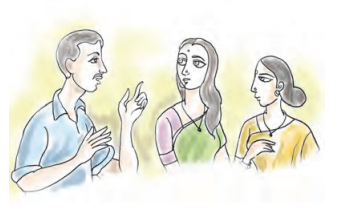
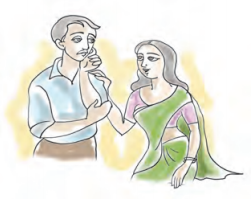
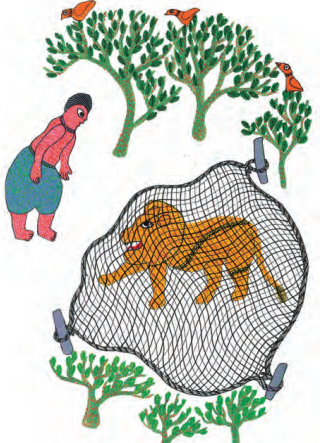
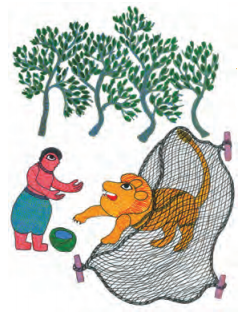
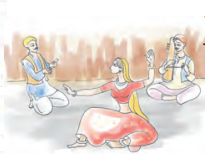
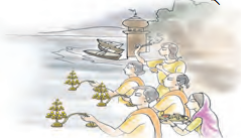
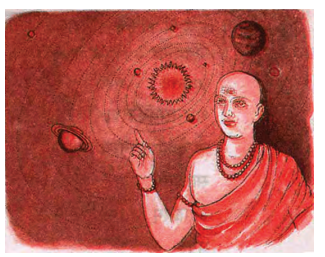
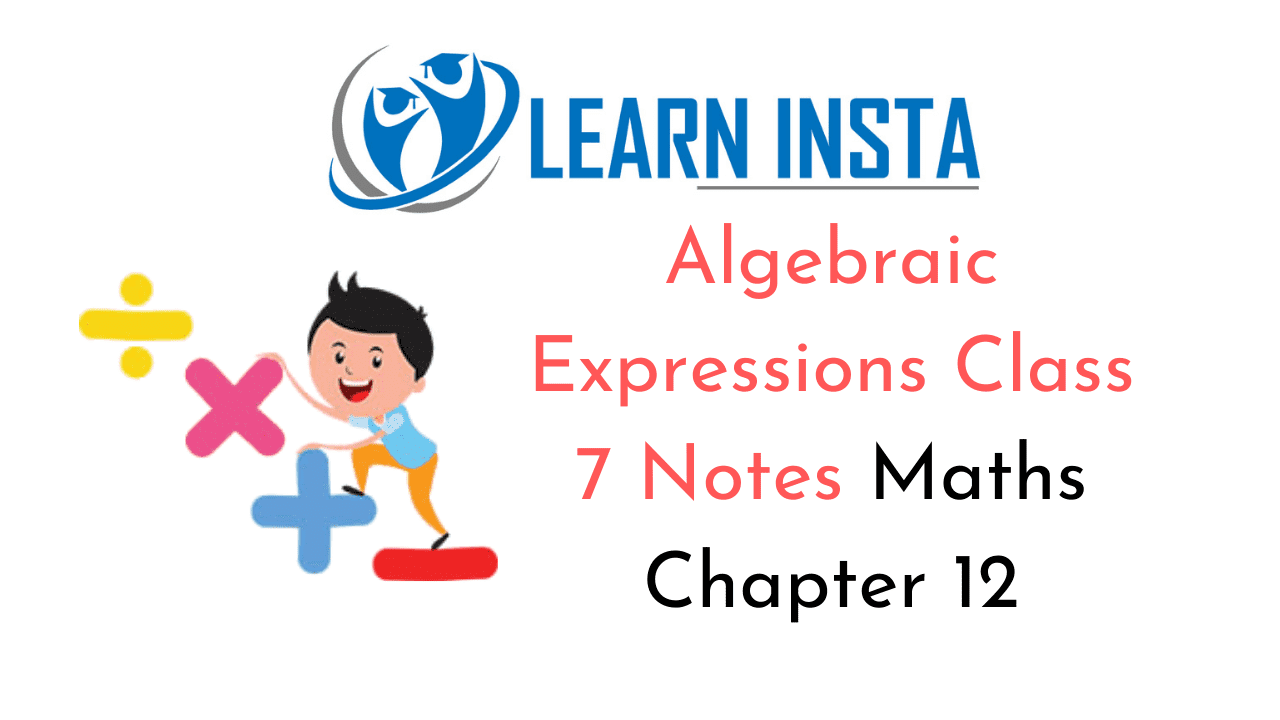 On this page, you will find Algebraic Expressions Class 7 Notes Maths Chapter 12 Pdf free download. CBSE
On this page, you will find Algebraic Expressions Class 7 Notes Maths Chapter 12 Pdf free download. CBSE 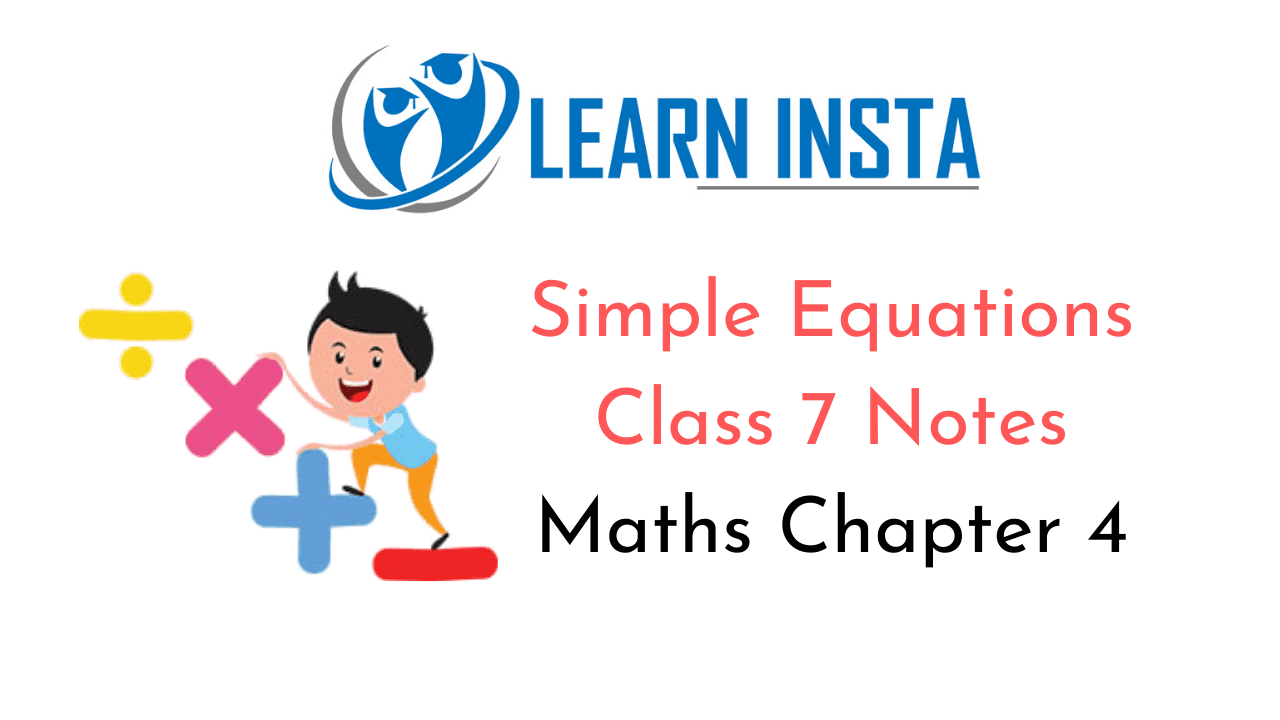 On this page, you will find Simple Equations Class 7 Notes Maths Chapter 4 Pdf free download. CBSE
On this page, you will find Simple Equations Class 7 Notes Maths Chapter 4 Pdf free download. CBSE